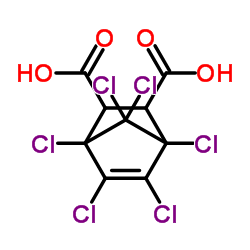An initiation-promotion assay in rat liver as a potential complement to the 2-year carcinogenesis bioassay.
Y P Dragan, T Rizvi, Y H Xu, J R Hully, N Bawa, H A Campbell, R R Maronpot, H C Pitot
Index: Fundam. Appl. Toxicol. 16(3) , 525-47, (1991)
Full Text: HTML
Abstract
Several pharmaceutical agents, manufacturing chemicals, and environmental contaminants were found to act primarily as promoting agents in an initiation-promotion paradigm. The phenotypic distribution of four enzyme markers--placental glutathione-S-transferase (PGST), gamma-glutamyl transpeptidase (GGT), canalicular ATPase (ATPase), and glucose-6-phosphatase (G6Pase)--was analyzed in altered hepatic foci (AHF) by quantitative stereology. The number and volume distribution of AHF were determined for each promoter tested. For phenobarbital and 2,3,7,8-tetrachloro-p-dioxin, PGST and GGT together scored 100% of the AHF; for 1-(phenylazo)-2-naphthol (CI solvent yellow 14) and chlorendic acid, PGST alone marked 90% of the AHF; after chronic administration of WY-14,643, ATP and G6Pase were the predominant markers. In rats fed tamoxifen, G6P scored more than half of the AHF. Differences in the number of AHF promoted by each of these agents and in their phenotypic distributions may reflect the differentially responsive nature of individual initiated hepatocytes to the action of specific promoters. Since the chronic bioassay of suspected carcinogens does not allow one to differentiate between weak complete carcinogens and those carcinogenic agents that act in a reversible manner to promote the growth of previously initiated cells, the partial hepatectomy, altered-hepatic-focus model of cancer development is proposed as a supplement to the chronic bioassay for the identification of those carcinogenic agents that are primarily, if not exclusively, promoting agents in rat liver.
Related Compounds
| Structure | Name/CAS No. | Molecular Formula | Articles |
|---|---|---|---|
 |
Chlorendic acid
CAS:115-28-6 |
C9H4Cl6O4 |
|
Use of continuous-flow UV-induced mutation technique to enha...
1991-09-01 [J. Ind. Microbiol. 8(2) , 99-106, (1991)] |
|
Chlorendic acid.
1990-01-01 [IARC Monogr. Eval. Carcinog. Risks Hum. 48 , 45-53, (1990)] |
|
Chlorendic acid.
2011-01-01 [Rep. Carcinog. 12 , 94-5, (2011)] |
|
Chlorendic acid.
2004-01-01 [Rep. Carcinog. 11 , III50-1, (2004)] |
|
Chlorendic acid.
2002-01-01 [Rep. Carcinog. 10 , 50-1, (2002)] |